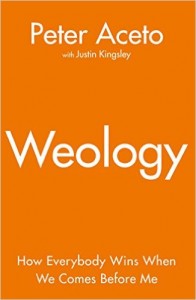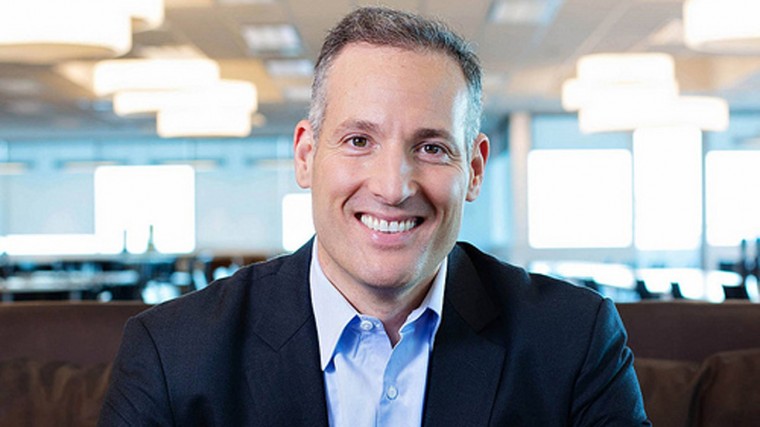This week’s interview is with one of the most well-known social CEOs in the world – Peter Aceto of Tangerine Bank (Formerly ING Direct) in Canada.
For Peter, a strong social presence is a powerful differentiator that sets him apart from other leaders, particularly in the banking sector.
He believes leaders have a lot to gain by engaging with employees, customers and prospective customers in meaningful dialogue about their lives, challenges, interests and concerns. By putting people first, they build a community of trust, loyalty and advocacy for the brand, both internally and externally.
It’s a compelling argument and one that he puts into practice every day.
You can find Peter on Twitter at @PeterAceto. He blogs regularly on LinkedIn and on Tangerine’s Forward Thinking blog. He is also the author of Weology, the story of Tangerine, its people, its culture and the leadership strategies he adopts for operating in a radically different way (well worth reading by the way!).
The Social C-Suite: Peter, you once famously said, “I would rather engage in a Twitter conversation with a single customer than see our company attempt to attract the attention of millions in a coveted Super Bowl commercial.” Do you still stand by that?
Peter Aceto: Absolutely. Leaders need to find ways to stay close to clients. Your business can’t help but make mistakes, so how will you know unless you talk and learn from customers directly? And by the way, that’s not just on social media, but also on the phone, via email and whenever you can meet them in person. In fact, I had an interaction with a client last night. Through this one interaction we fixed a process that must be negatively impacting other clients, and the client herself was thrilled with the direct access to me and the quick resolution to her problem. I wouldn’t be surprised if she shares her experience with all her work colleagues today. So yes, that is better than a Super Bowl ad, wouldn’t you agree?
You used to take your turn in the call center. What are some of the important lessons you’ve learnt from talking to customers directly – whether it be over the phone, face to face or via social media?
You gain a tremendous amount of insight on what makes banking complicated for them and what can make it easier. You can then take that insight and apply it to the products and services that will simplify the process and meet their needs. Tangerine employees are so passionate about helping our clients, but sometimes the systems they use and the processes we have may make it harder for them to help. So, these direct calls I have with clients help escalate and improve these areas for the benefit of employees – and ultimately clients.
“A social organization is about putting people first in the short term so that a company can thrive in the long term”
In Weology you talk about Tangerine’s journey to becoming a ‘social organisation’. Can you explain what that means to people who may not be familiar with the term.
Most organizations – let alone banks – are trying to understand the transformational shift the world is seeing. Some recognize the future is social, but most only have a partial view. Social media is merely a tool. Becoming a social organization however is the future. What that requires is a profound shift in the way business is led. I believe there is a better way to do business – one that puts humanity at the forefront. A social organization is about putting people first in the short term so that a company can thrive in the long term.
In this article, David Gallagher (former CEO of Ketchum Europe now Growth & Development President at Omnicom) talks about Julian Stodd’s ‘NET Model of Social Leadership’ and how it has strongly influenced him. How do you see narrative, engagement and technology influencing modern leaders?
What I like about Julian’s model is the idea of deploying the power of your organization to liberate innovation and creativity. Sure, you do that through engagement, narrative and technology. But it’s important to know why you’re doing all this. Authenticity matters. That’s what modern leaders need to understand. You can’t just take a model or a philosophy, even Weology, and apply it without authentically making it your own.
How has the business culture you’ve cultivated at Tangerine, based on transparency, equality and collaboration, affected the business’ overall performance? Does it make sense from a business perspective?
I once tweeted a question about what comes first: happy employees, happy shareholders or happy customers? The best answer I received was: “Turn employee passion into customer magic into shareholder cash.” So there you go . . . What I’m trying to do is to build a culture in which individuals – people – have the means to truly thrive, to succeed, to be happy in their work, and to feel fulfilled and growing. A culture that gives voice to all team members, no matter who they are or what they do. Why do I do this? Because being good to your own people is simply good business. Because when ‘Me’ thrives, ‘We’ benefit… It’s a win-win scenario. This leads to great products, a great experience and great people who are committed to our clients and our purpose.
“Being good to your own people is simply good business. When ‘Me’ thrives, ‘We’ benefit”
This has in fact lead to an industry-leading Net Promoter Score for us at Tangerine: over 50% of our new clients are being referred by existing clients. This has led to our clients choosing to do more and more with us, which brings in more clients who do more with us, which then leads to more revenues for our shareholder. It absolutely works.
You started off as General Council at ING Direct and, before you became CEO, you were Chief Sales and Marketing Officer. Did working in a senior sales and marketing position influence your approach to leadership once you took over as CEO?
I was also responsible for risk management for three years. These experiences were invaluable for my leadership development. I always tell our employees at all levels to raise their hands and volunteer for new roles, to be added to project teams, rotation programs, etc. We all need to collect (and learn from) experiences, because having a well-rounded view of the entire business brings an incredible amount of perspective and diversity to our thinking.
As a trained lawyer, what would you say to people who advise against CEOs being ‘exposed’ on social media, as they can say the wrong thing and bring the business into disrepute, affect the share price, etc.
‘Keeping your ear to the ground’ is tremendously strategic for a CEO. It so happens to be partially done on social channels these days – for everyone to see. So yes, there are risks involved, but the risk of not listening and engaging with your customers is far greater. We need to put a bigger value on the benefits of this new shift in leadership. Senior leaders have the ability to make these risk-reward trade-offs in meetings, when speaking at conferences or with the media. Social media is really no different. Be thoughtful, not impulsive – but do it.
Following on from the question above: in the social and digital age – and with technology like AI rapidly improving and encroaching into social media interactions – is it becoming imperative for CEOs to become the ‘face’ of their brand, even if they don’t particularly want to be?
I’m not sure that CEOs always need to be the face of their brand. This needs to be a thoughtful decision. It depends on the business, the industry and the CEO in question. Certainly, all CEOs have a key responsibility to build high performing teams, so recruitment and the employer brand should be a part of what a CEO thinks about.
“Transparency and authenticity are absolutely crucial. If leaders don’t believe or value that, they simply won’t understand the need for social interactions”
However, it is absolutely imperative to shift the way businesses are led. Transparency and authenticity in today’s world are absolutely crucial. If leaders don’t believe or value that, they simply won’t understand the need for social interactions – or frankly any future platform we don’t know about yet that might be perceived as a threat to a closed-door business.
What do you think are the biggest challenges (and opportunities) for CEOs to tap into social media – and Twitter specifically?
The opportunities are significant and important. When you listen and engage you gather a great deal of insight. Many leaders are concerned about the time it may take to engage on social media. But CEOs always find time to do strategic things, so we need to define social media engagement as a strategic initiative for CEOs. That is certainly my view.
“We need to define social media engagement as a strategic initiative for CEOs”
Finally, what advice do you have for CEOs who are afraid of taking the leap onto social media (especially Twitter)?
At some point this will be an expectation of employees, consumers and therefore boards. If you don’t want to become obsolete then you need to begin to embrace it and start heading up the learning curve. You can spend time listening first. You’ll see your reputation and that of your business being defined without your involvement. That’s when you’ll decide that owning your own story is crucial. Also, there are always very social-savvy people working in your business, so consider a “reverse mentoring” relationship where you can learn side by side with a smart, thoughtful millennial. Sounds like fun to me.
__________________________
It does sound like fun. And it is!
Being a social CEO changes one’s perspective completely on what leadership actually means. Gone are the days of hard-ass leaders epitomized by ‘The Apprentice’. In is collaborative, accessible and enlightened leadership as epitomized by Peter.

